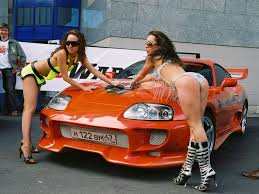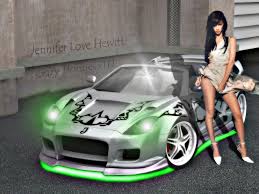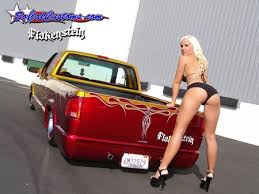
Make no mistake, the 2010 Buick LaCrosse is the most important vehicle launched by the brand in decades. Buick, nearly consigned to the dustbin of history a few short years ago, is now one of General Motors' four remaining "core" brands. And if it weren't for the Chinese market's love affair with the marque, there's little doubt Buick would've followed Oldsmobile into the afterlife. Instead, GM is attempting to (once again) refashion the brand as a serious competitor to Acura, Lexus and Volvo, and the LaCrosse is the opening salvo in the battle for hearts, minds and market share – not to mention pocketbooks.
Technically, the "New" Buick was born two years ago when the Enclave debuted, but in reality, that was simply a new segment for the brand. In contrast, the LaCrosse marks the initial transformation of Buick's future. CEO Fritz Henderson has stated that new Buicks (and actually all GM vehicles going forward) must be more than competitive – they must be superb. They can't merely match the competition, they have to surpass them in every quantifiable way. So the launch of the LaCrosse couldn't be more fortuitous or fraught with risk. Developed before bankruptcy, bailouts and government intervention, the LaCrosse is what GM envisioned for the future of Buick over two years ago. But is it good enough to revive the marque?
The 2010 LaCrosse is the first North American product on GM's new global mid-size platform (Epsilon II) and it follows the Opel/Vauxhall Insignia that debuted last year. This new sedan is truly a citizen of the world, with engineers at Opel tasked with creating the basic platform and most of the chassis development, while the American team tackled the body structure and the the Chinese handled the interior and the majority of the exterior design. That last part is essential considering the Chinese see Buick as a premium brand, and they wanted to ensure the design and materials were best-in-class.

But when talk turns to the meaning of "premium" and where Buick fits into the marketplace, there's more than a bit of confusion. Time for a class in brand recalibration with Buick-GMC vice-president Susan Docherty. Docherty explains that Cadillac plays in the same "luxury" segment as BMW and Mercedes-Benz, but Cadillac aims at buyers looking for something bolder and more ostentatious – a vehicle they can wear as a fashion statement. Buick, on the other hand, carries the "premium" designation, where Acura and Volvo live, offering many of the same features and functionality while carrying a bit less brand cache.




Brand distinctions aside, it's hard to argue with the LaCrosse' aesthetics. The new mid-size sedan incorporates many of the elements seen in the brand's 2007 Riviera concept, along with details from Buicks of yore that don't come across as retro or cliche. Unlike its conventional, upright and uninspired predecessor, the new LaCrosse features a lower, coupe-like roofline that makes the sedan appear significantly smaller. However, it's virtually the same size as the outgoing model, trading 1.2 inches of overall length for a comparable increase in wheelbase and, remarkably, an additional two inches of height.
The hoodline, beltline and rear deck are all taller than before, while the roof wraps down towards the sedan's haunches, counteracting the additional height by imparting a chopped greenhouse effect. Both the front and rear glass have a significantly flatter slope than before, and since the LaCrosse's sheetmetal will find a global audience, the upright front fascia meets European pedestrian crash standards, the same regulations expected to be adopted in the States. The body surfaces have more pronounced creases in the hood and flanks, including Buick's signature "sweep spear" at the rear quarter, all contributing to an elegant, modern design thoroughly suited for the 21st century.


Three trim levels are available: CX, CXL and CXS. The base CX gets a choice of 17-inch steel or alloy wheels, while the two upper levels get 18-inch rolling stock and the CXS Touring package adds 19-inch hoops along with an adaptive damping system. At launch, the CX and CXL come standard with the new 3.0-liter direct injected V6, while the 3.6-liter DI V6 is optional on the CXL and standard on the CXS. Later this fall, the 2.4-liter DI four-cylinder will be added as the standard engine in the CX and CXL, the only such engine currently available in the segment.
GM Vehicle Line Executive for global mid-sized cars, Jim Federico, explained that while some customers prefer a touch interface for the navigation and audio systems, others prefer a traditional knob arrangement. To cater to as many consumers as possible, Buick provides both setups in the LaCrosse, with most of the controls accessible via the screen or a knob directly below. And for the tech adventurous, most of the systems are also accessible through voice commands by pressing a button on the steering wheel.

Because the LaCrosse has a higher cowl and the base of the windshield is so far forward, the designers created a dashboard that slants away from occupants, lending the cabin a more open, airy feel. It definitely works to counteract the effects of the high beltline, which Federico explained is becoming more popular with consumers who enjoy the "sitting in a tub" sensation (our words, not his) as it increases the occupant's sense of security.
While the explanation is a bit dubious, we were pleasantly surprised that, despite its narrow side glass, the LaCrosse never caused bouts of claustrophobia. Additionally, the sensation of spaciousness is also aided by a relatively narrow center tunnel and door armrests. The use of a standard electric park brake allowed the tunnel to be squeezed down and the shape of the door allows easier access to the seat controls on the outer edge.




The front seats are well shaped and supportive, and should hold up surprisingly well to both aggressive driving and long road trips, while Buick's maximization of interior space within the wheelbase pays dividends for passengers in the rear. For a car with comparatively modest overall dimensions (197 inches bumper-to-bumper), the LaCrosse is positively cavernous inside. Even with a six-foot driver in front, we had at least four inches of knee clearance sitting in the back. The rear seat cushions also elevate to give a theater seating effect, aiding visibility out the front. However, sitting taller in the rear makes the roof curves over the sides more noticeable, although we had no problem with clearance getting in and out of the back.


The majority of contemporary cars we've tested with tap shift capabilities have a "Sport Shift" mode. Simply slapping the shifter into the sport gate without manually changing gears typically enables more aggressive shifts, higher shift points and automatic downshifts during deceleration. While we experienced this behavior on the LaCrosse CXS with the Touring package, the other models we tested were devoid of Sport mode, yet allowed manual shifting. Unlike similarly equipped vehicles with a manual mode, accelerating up to redline just gets you to the rev-limiter, with no automatic shift over-ride, so it's true manual control. This isn't the case on the lesser LaCrosses.
Although the steering wheel doesn't feature paddles, it does an excellent job at its primary task: controlling the car. The V6-equipped models are fitted with a variable effort hydraulic steering assist system, which, unlike most electric power assisted setups, typically provide more steering feedback on-center and through the corners. Federico explained that while developing the LaCrosse, the teams in Europe and North America tested a variety of steering and suspension setups and ultimately decided that a solid steering system, with no slop and ample feedback, would appeal to Americans just as it would to Europeans (hallelujah!). The result is simply the best steering feel we've ever experienced in a Buick. The helm is mercilessly devoid of free-play and the weighting was well-judged no matter the speed. We'll be examining this more thoroughly when we're afforded a full week with the LaCrosse, and hope that when the four-cylinder models arrive later this year (equipped with an electric assist system), the sensation will remain the same.

Both of GM's "high-feature" V6s are smooth running and highly refined, and could easily find a home in any of the foreign premium brands that compete with the LaCrosse. Driving down the road at light-to-moderate loads, the combination of NVH control and the engine's characteristics leave it virtually silent. Plant the throttle pedal and either engine exhibits a very pleasant snarl, with the larger engine motivating the LaCrosse with genuine authority under all conditions. The smaller mill, while making nearly the same horsepower as the previous port-injected version of the 3.6-liter, makes significantly less torque (217 lb-ft), particularly at the low end. The result is a more sedate response before the gearbox kicks down a notch – another situation where we were aching for a set of steering wheel-mounted paddles.
Sitting inside the LaCrosse at speed provides a remarkably serene environment. Wind noise was virtually nonexistent and carrying on conversations with "inside voices" allowed us to hear and be heard with ease. Considering that the engineering and design teams were scattered around the world, the LaCrosse seems remarkably well integrated and should prove very competitive in the "premium mid-lux" segment described by Docherty. Whatever you call it, the Lexus ES and GS, Acura TL and Volvo S60 and S80 better look out.


When the 2010 Buick LaCrosse arrives in showrooms this August, the base CX with the 3.0-liter V6 will start at $27,835 with the CXL starting at $30,395 and the CXS going for $33,765. An absolutely maxed-out CXS just barely tops $40K with every available option. The four-cylinder model should be priced slightly less than the 3.0-liter, but it won't be de-contented – it's simply a different powertrain. Buick also ups the base warranty from the three-years/36,000 mile bumper-to-bumper on most GM cars to four years/48,000 miles.
[Source: Autoblog]






































